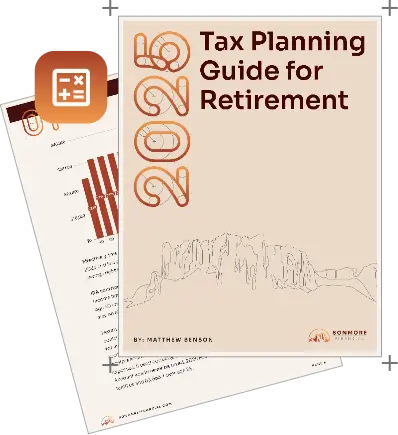Table of contents
Whether you are buying a house, retiring, up-sizing, down-sizing or smart-sizing, your insurance needs will change. In this guest article by Aaron A. Anderson, Vice President of Personal Lines at Strong Tower Insurance Group, we outline the most common insurance products and why it is important to update them as you move through life.
When it comes to managing financial risk, while there are many factors that contribute to everyone’s unique personal needs, having an insurance agent that can identify risks, evaluate, and select insurance products and propose solutions based on market research across several carriers can make this somewhat daunting process a lot easier. It is important to work with an independent risk advisor/insurance agent to make sure there are no gaps in policy language or coverages. An independent insurance agent/broker can easily work with several carriers to find the best policy to fit the need of the asset while having an overview of the entire household.
Auto
Know your limits and understand your coverages. For example, if there are teenagers in the house and they start driving, it might be a good idea to pay cash for an older, safe, and reliable vehicle. One way to try to manage the added insurance cost is to skip comprehensive and collision coverage—however, if there is an accident or if the vehicle is stolen, there’s no coverage. The thought is, get a piece of junk car and if it gets damaged or stolen¼oh well, right? Many times, parents will cut corners here because they think that if they get the cheapest insurance possible for their teen driver, they are still in the clear if something happens. Not true. The Family Purpose Doctrine is a great reference to help parents understand their liability regarding any named drivers living in their home, and how that needs to be addressed from an insurance/risk perspective.
Married Individuals
Upon legally tying the knot, most couples will combine their personal insurance needs for autos and home. An experienced insurance professional that has a trained eye will update their profile and make sure there are no gaps. Now is also a good time to review current life insurance policies for beneficiary changes, along with reviewing and securing additional life insurance on each other. Understand also that employer-provided life insurance is a nice perk but is not always adequate to a family’s needs. Can you buy more through your employer? Probably not. Can you take it with you if you leave the job? Probably not. We will discuss this more below.
Home
Buying a house? Having adequately insured cost of replacement for your dwelling is the most important thing to keep an eye on and adjust as needed. Your carrier’s inflation guard will not usually keep up with the market, especially if you have been insured with that company for a long period of time. This should also be updated to include remodels, additions, or anything adding to the square footage of your home. Homes—and neighborhoods—go through life cycles and that could be either good or bad. In addition, exterior environmental factors can change, such as trees growing and touching the roofline, or area flood and fire scores. One way to hedge against these risks is to ask yourself this question: if your home burned to the ground, would you have enough money to rebuild it? It’s a tough thing to consider, but many homes are currently underinsured, especially with a fluctuating economy, inflation, and supply challenges changing rapidly. Working with an experienced local insurance agent can help.
Does your policy offer “Guaranteed Replacement”? Be sure to ask your agent if your policy includes guaranteed replacement costs, which will rebuild your home no matter the cost. Does your carrier offer “The Cash Out” option? If your house and the entire community are destroyed, the cash out option allows you to either choose to rebuild there or move on to a different area.
In addition, as we age, our assets age too, increasing or decreasing in value. Assets inside your home, such as art, collectibles, sports memorabilia, jewelry, or fine clothing, are sometimes left off the scheduled items on the home policy, personal articles floater, or an inland marine policy. Don’t forget to include that expensive set of golf clubs too!
As a homeowner, you want to make sure you are protecting your assets by having adequate auto limits. Yes, this is part of hedging risk because if an auto accident were to happen, your home becomes a target to go after for financial reparations. If you can’t afford a personal umbrella policy, look instead at the costs of increasing your internal auto limits.
Umbrella
When do you need an umbrella policy? In general, if a client has a pool, pets, or kids, that starts the conversation for the need of a personal liability umbrella policy. First, to qualify for an umbrella, your auto limits on all vehicles, including classics, collectors, etc. need to meet the minimum limit guidelines. Then, there are two parts to an umbrella policy:
Personal Liability – Part 1 – $1,000,000 – Protects your assets and protects the public from you or from any harm you may cause to others.
Uninsured/Underinsured – Part 2 – $1,000,000 – Protects YOU from the public. Many people only have Part 1 either because their current insurance carrier does not offer Part 2, or the agent did not offer Part 2. But you need both—why would you insure the public for more than yourself? Not all states or carriers offer Part 2, so be sure to check with your agent.
Self-Insure
More and more people are choosing to self-insure, which basically means they are raising their deductible and are willing to take on more of the expense if something goes wrong. Generally, those who self-insure have extra savings or an emergency fund readily available to cover it, protecting themselves against large, unexpected losses, but spending no more time or energy on small claims.
Life Insurance
At what stage should you consider life insurance? First, you need to be able to afford the premium. Any lapse in coverage related to late or missed monthly payments will cancel the policy, so first, be sure this is a payment you can be financially responsible for. A good rule of thumb is to purchase a term policy that is about as long as you plan to work and is equal to 10-15 times your income. Other things to consider are: How much in outside assets do you have? What is your mortgage balance? What is your spouse’s income? Keep in mind that the objective of term life insurance is to ensure that if you were to pass away, your survivors could maintain the same lifestyle they would have had if you were still there. As a result, the need for life insurance should be declining over time if you are contributing to your investment accounts and paying down your mortgage.
Often I hear that individuals have life insurance through their employers, so they don’t think they need any extra. However, the majority of the time, an employer’s life insurance program is non-transferable and you can’t add on to it. In addition, if you are in good health, you can often get more and/or better coverage for less outside of your employer’s plan. Plus, buying your own private life insurance will allow you to maintain more control over time.
Long Term Care
As it relates to long-term care insurance, you can elect to purchase an insurance policy, or you can elect to self-insure the risk or a combination of the two. The most important part is that you have a plan.
If they are able, you could potentially plan to have your children take care of you if your needs were not too severe. Bear in mind that if you will have working older children, the time that you may need this type of assistance will typically be in their highest income-earning years.
You can use this Genworth calculator to get an idea of what care may cost in your area. As of 2021, it cost $26,000-$95,000 a year for care in Phoenix, on average. If you elect to have an insurance policy be a part of your long-term care plan, there are several features to consider: including monthly benefit amount, maximum benefit amount, premium, and elimination period. Consider this risk in your overall financial plan to determine what is best for you.
The risk management process can be complex, and putting together a well-constructed plan will involve an experienced insurance agent; preferably an independent insurance broker and agency like Strong Tower Insurance Group. If you would like to contact Aaron, he can be reached at [email protected] or 480-926-9011.
Important Note: Sonmore Financial LLC and Strong Tower Insurance Group are not affiliated.



